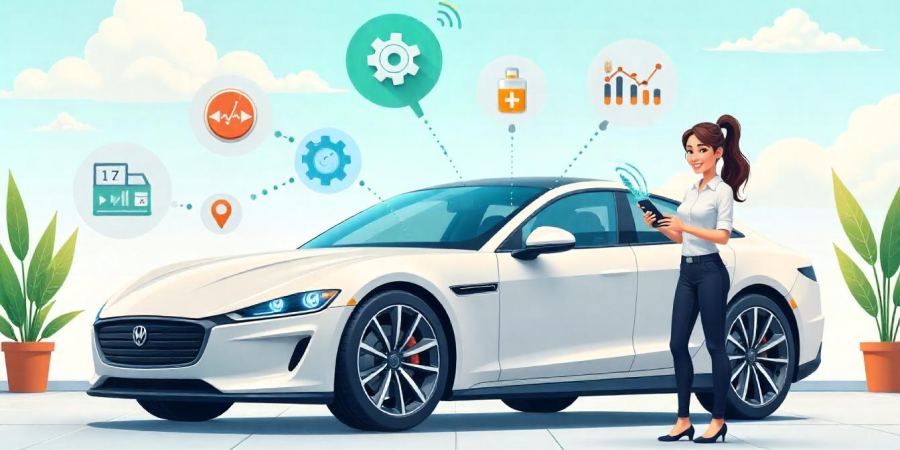
Autonomous AI Agent Development: Building the Future...
In today’s world of rapidly evolving technologies, autonomous AI age...

In the age of smart everything — from homes to watches — vehicles are no exception. With the rise of vehicle diagnostic app development, car owners and fleet managers can now unlock real-time insights, detect issues early, and optimize performance, all from their smartphones. These apps are changing the way we interact with our vehicles, making maintenance smarter, cheaper, and more efficient.
In this blog, we’ll dive deep into how vehicle diagnostic apps work, why they’re valuable, and how to build one that truly stands out in today’s market.
A vehicle diagnostic app connects with your car’s onboard diagnostic (OBD-II) system, typically via a Bluetooth or Wi-Fi OBD scanner. These apps collect real-time data from various vehicle sensors and electronic control units (ECUs), providing:
Many also offer real-time alerts, maintenance reminders, and predictive diagnostics — giving users complete control over vehicle health.
To build a truly competitive diagnostic app, here are the features that matter:
Your app should support Bluetooth/Wi-Fi-based OBD-II dongles, which plug into the vehicle’s diagnostic port.
Display real-time data like engine RPM, speed, fuel trims, throttle position, coolant temperature, and more.
Read and translate diagnostic trouble codes (DTCs) with clear definitions and repair suggestions.
Allow users to track service history, upcoming maintenance, and receive timely alerts.
Show fuel consumption trends and offer eco-driving tips.
Notify users immediately if a critical issue or warning signal is detected.
Record and analyze trips, driver behavior (speeding, harsh braking), and more — useful for both individuals and fleet management.
Let users access data across devices and back it up securely.
Here’s a breakdown of the development process:
Is it for car owners? Auto service centers? Fleets? Define clear goals and use cases.
Cross-platform development can reduce costs and time. Consider using Flutter or React Native.
Integrate communication protocols like ELM327, and use Bluetooth/Wi-Fi APIs to connect with scanners.
Keep interfaces clean and data visualizations intuitive. Users shouldn’t need to decode car jargon.
Want help crafting a seamless interface? Explore our UI/UX Design Services.
Use cloud platforms for data storage, analytics, and diagnostics tracking. Consider AWS, Firebase, or Azure.
Implement efficient data parsing and rendering for smooth, low-latency experiences.
Test across vehicle types, OBD-II dongle brands, and operating systems.
Are you in fleet management? Check out our Custom App Development Services to build your ideal diagnostic system.
Apps dealing with vehicle data must be secure.
The popular OBD Fusion app lets users connect to their cars via ELM327-compatible scanners. It provides a virtual dashboard, diagnostic reports, trip logs, and more — all wrapped in a user-friendly design.
Learn more: OBD Fusion Official Site
Component Recommended Tech
Frontend React Native / Flutter
Backend Node.js / Laravel
Real-time Communication WebSockets / MQTT
Database Firebase / PostgreSQL
Cloud Hosting AWS / Azure
Most cars manufactured after 1996 (US) or 2000 (Europe/Asia) come with an OBD-II port, making them compatible with diagnostic apps.
Accuracy depends on the OBD-II adapter and the app’s parsing logic. High-quality apps using certified dongles offer excellent results.
Yes, many apps let users clear codes, though it’s recommended only after fixing the root issue.
Diagnostic apps are meant for diagnostics, not distraction. Data is typically collected in the background — users should check results only when the car is parked.
Vehicle diagnostic apps are redefining the automotive experience — offering smarter insights, reducing costs, and making vehicles safer. Whether you’re building an app for individual drivers or fleet operators, this space is ripe for innovation.
Need help developing a powerful, user-friendly diagnostic app?
👉 Talk to our experts about Custom App Development and turn your vision into a reality.